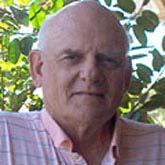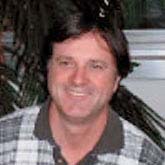Summary
Project Overview
Net carbon flows in an urban system are mitigated by human inputs and interactions that control resource inputs and vegetation forms (Figure) and have been shown to have significant effects on productivity of urban vegetation.
Descriptive research from the first six years of CAP LTER suggests that the principal driver of urban primary productivity is irrigation of landscape vegetation. Productivity of irrigated urban vegetation was estimated to be about 2.8 times higher than that of surrounding Sonoran Desert vegetation. Though the Phoenix urban heat island has a well pronounced atmospheric signature, altered patterns of water cycling caused by differential patterns of irrigation water delivery and the ratio of densities of urban landscape vegetation to the urban impervious surfaces were also shown to have a demonstrable effect on microclimates that were most pronounced in CAP area during early morning hours in summer. Moreover, vegetation management practices such as the frequent trimming of urban vegetation to regulate plant size and form and increase plant canopy density were found to lower plant water use efficiency. Though air in Phoenix is known to be carbon enriched, concentrated impervious surface densities were shown to increase urban heat storage causing elevated above and below ground temperatures and reductions in productivity of urban vegetation by as much as 87%. Research conducted during the first six years of CAP LTER also showed that human landscape preferences in Phoenix are shaped by a desire for the color green, and that the emergent popularity of desert landscape design themes in Phoenix is predominately a top-down social phenomenon directed by public and private interest groups.
In general, CAP2 research initiatives relative to canopy and under canopy interactions of microclimate and ecosystem processes and net primary productivity need to continue to address and refine our understanding of scaling up from CO2 flux of individual leaves (photosynthesis) to carbon accumulation of whole canopies and communities (productivity). Specifically, research on urban microclimate and NPP during the next six years should address the following three questions:
Principle research questions:
1. To what extent are ecosystem/local climate interactions and feedbacks shaped by human response to local climate or other parameters such as water conservation, desert preservation, human preference for green space, architecture and density of impervious urban surfaces?
2. Urban land use transformations: How will qualitative human perceptions of environmental quality change quantitative patterns of future urban vegetation NPP?
3. What are the cost, benefits, and efficiencies of human inputs (nutrients, water, elevated urban atmospheric CO2, urban heating) and outputs (CO2 respired, evapotranspiration, vegetation removal) to urban vegetation productivity? There is a need to develop a biological context for an analysis of the costs and benefits associated with urban NPP.
Personnel
Funding
2005-06 Budget Request
1. Nine-month graduate research assistant
Overview of RA responsibilities
a. Active participation in ongoing projects
- PP extensive monitoring project - Conduct measurements of size during winter months and leaf chlorophyll concentrations during summer of trees at 50 sites. Fieldwork, laboratory assays, and CAP LTER database entry work required. Time: 2 months
- Landscape management experiment at the Desert Botanical Garden. Data collection and entry, site maintenance. Time: 1 month
- Long-term landscape water use project. Monthly collection of residential landscape water ruse and data management. Time: 1 month
b. Participation in new projects
- North Desert Village Project. Assisting in final installation of plantings for the NDV research project. Conduct measurements of vegetation size during winter months and vegetation leaf chlorophyll concentrations during summer. Fieldwork, laboratory assays, and CAP LTER database entry work required. Time: 3 months
- Microclimate and climate data archive search - Assisting researchers in database constructs and analysis on long term climate change from a variety of global/regional/local sources. Assisting with major weather station maintenance, archival of data; assist microclimate data management at the North Desert Village site project. Time: 2 months
2. Establishment of 4 micro-meteorological stations for the North Desert Village landscape community project at ASU East. One micromet station per treatment.
Equipment list
CR1000-4M measurement and control system w/ keyboard/display, RS-232 to CR1000 control port cable. $1860.00
Solar panel, charging regulator and sealed rechargeable battery. $400.00
IRTS-P infra-red thermocouple sensor (1). $745.00
HFP01SC-L soil heat flux plate (1). $975.00
CS616-l water content reflectometer (2) w/ installation tool. $500.00
SM4M storage module. $400.00
ENC 16/18 weather resistant enclosure. $350.00
Subtotal for one micro meteorological station. $5230.00
Total for all four micro meteorological stations. $20,920
Ancillary equipment and supplies include loggerNet/U software upgrade from PC208. $295.00
Type T thermocouple Wire (copper- constantan) 24G - 1000'. $350.00
Total cost
$21,565.00
3. One portable vehicle-or-bicycle mobile sampling system for sampling atmospheric microclimates within and around NDV grounds premises
Equipment list
CR23X micrologger. $2,688
CR23X low profile base w/o battery. $65.28
Con plug DC power 12v auto adapter. $1.10
IRTS-P apogee infra-red thermocouple sensor precision model, 15 ft cable. $745.00
GPS16-HVS Garmon GPS receiver w/integrated antenna, 15ft cable. $240.00
GPS16-HVS magnetic mount. $17.28
GPS16-HVS RJ45 interface cable w/pigtails 8 inch. $19.20
HMP45C-L vaisala temperature/RH probe. $499.20
Cable 24 AWG 3 twisted pari shielded santoprene. $0.55
UT12VA Gill solar radiation shield for HMP45C w/tower mounting hardware. $216.00
Micrologger software PC400. $282.20
Total cost. $4,773.81
4. Normal equipment maintenance - estimated at. $1500
- Manufacturer calibration of micro met radiation sensor
- Manufacturer calibration of LI COR 6200 photosynthesis manufacturer calibration
- Repair of existing Campbell Scientific AM416 multiplexer



 Anthony Brazel
Anthony Brazel
 Chris Martin
Chris Martin